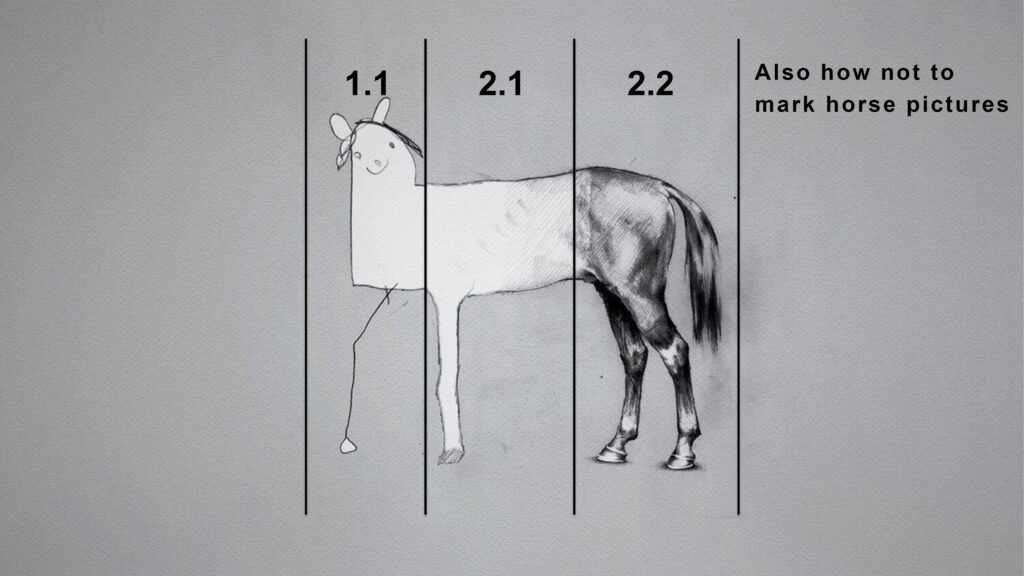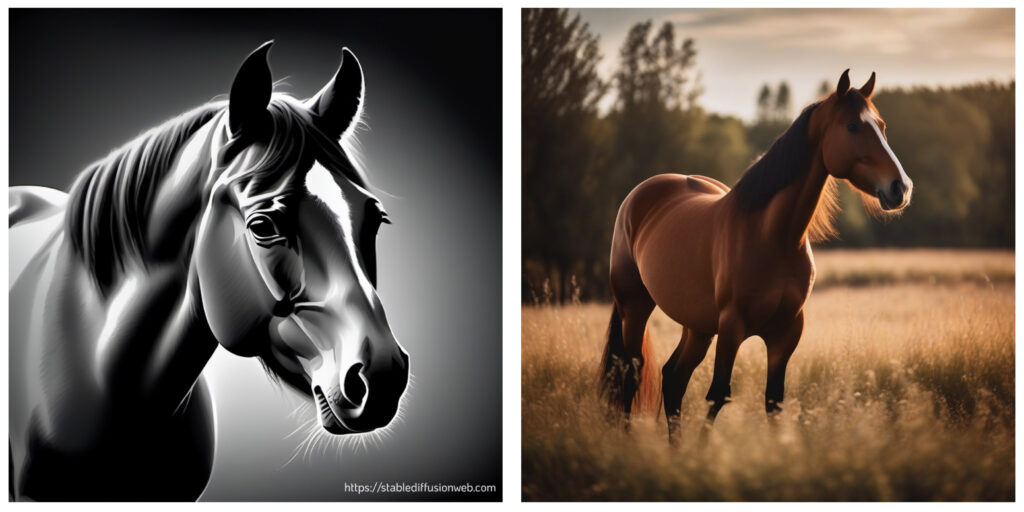(…or there is no such thing as a good picture of a horse.)
A little while back I was invited to give a talk at the University of Sydney where I argued that “The ‘Art School’ approach is increasingly relevant across all university-level teaching to avoid our graduates getting drawn into an impotent skills race with technology”. This post is a condensed version of that talk.
The full video of the talk is here: https://vimeo.com/896653558/bbc141a5e1?share=copy
(Thanks to Professor Peter Bryant and the folk at the University of Sydney Business School for the invitation and the excellent hosting)
—————————–
No correct answers
I often joke that I help to run a university with 25,000 students who are mostly studying subjects with no correct answers. This can look like a bit of a conundrum, especially when it comes to assessment. We can unpick this if we take into account two Art School-esque principles.
- The emphasis is on assessing the creative journey, or the narrative of the work, not the output or the ‘product’ of the work.
- There is no such thing as a good picture of a horse.
Before I deal with that second point, it’s worth noting that the ‘the narrative, not the product’ is a version of the idea of ‘assessing the learning not the thing’. In that sense, all of higher education should be taking this approach in one form or another. For example, an exam shouldn’t be assessing how good you are at exams…
No such thing as a good picture of a horse
If we did operate on the ‘good horse’ or ‘correct answer’ basis then I suspect our marking criteria would look like this:

This isn’t the case though as while there is significant merit in, and respect for, technical skills these are not the point or the aim. To explain this, it’s useful to consider that ‘all creative work is conceptual’, but sometimes the concept is really basic. For example, the concept might be ‘a painting of a horse that looks very much like a horse’ but it could be ‘a cartoon of a horse which encourages us to question the limits of Generative AI’ . Hiding in this ‘it’s all conceptual’ notion is something I return to a lot, namely a pedagogy of questions, reflection and critique.
Let’s say I set you the task of creating a picture of a horse, you can achieve this any way you want. The catch is that you have to explain why you have taken a certain approach, what you think the value of this approach is and the extent to which you have been successful relative to that value. (Importantly, you can also reflect on how you might have failed to do this).
You can use all kinds of tools to construct this story: theory, method, process, your identity, your cultural influences and experiences, a chosen canon of relevant work etc. This forms the narrative of your work and this can be assessed.
Beyond skills and knowledge
This pedagogy is not radical but it tends to be more prevalent at the ‘top end’ of education systems. The PhD viva and the notion of a ‘defense’ being the classic example. Intriguingly, in arts education, students encounter this form of pedagogy from day one. That’s a tough gig and figuring out how to gently scaffold students into this form of learning is an ongoing challenge. It might be a ‘defense’ in some sense but we don’t want it to be defensive as this simply privileges the privileged.
The upside here is that an ‘Art School’ approach equips graduates with the ability to go beyond the ever shifting currency of skills and knowledge by developing the ability to question and critique context. To tell a story as much about the ‘why’ as the ‘what’. Our graduates can ‘see’ systems and structures which can then variously be navigated, made visible, modified, avoided or deconstructed. All extremely useful attributes for employers, assuming they work on a trust basis.
Avoiding a skills ‘arms race’ with technology
So perhaps our marking criteria should look like this?

Well no, because we are looking at an output here, not the story. Any of these representations could be strong or weak pieces of work depending on how they respond to the brief and on the quality of the critical-creative narrative of their genesis.
What we can say is that the front of the horse is the most imaginative and the least likely to be reproducible algorithmically. The cartoonish image doesn’t go head-to-head with techno-solutionist approaches because it simply side steps mainstream notions of ‘good’. It’s genuinely difficult to get Gen AI to produce the crazy looking cartoon because it simply doesn’t have enough to go on. I’m not saying this won’t improve, this is more a point about the limited value of ‘Good’ when processes can are automated. When I tried to generate ‘both ends’ of the horse with Stable Diffusion (as a prompt novice) it produced this:

In the talk I used this Gen AI example as the current exemplar of a long line of what be usefully termed as technologies of cultural production. 15 years ago I might have made similar points about Wikipedia, there are many similarities in the questions raised by Gen AI and Wikipedia because they are both technologies of cultural production which rapidly emerged in the public domain. This is a category of technology we consistently struggle with because it recategorises forms of labour and professional identities.
Imagination not imitation
As mentioned, Gen AI, as with any algorithmic technology, imitates but doesn’t imagine (Yui et al. 2023). Here is where the ‘Art School’ approach becomes crucial as reproduction and remixing of canon, i.e. ‘elegant imitation’, is rapidly losing its currency. In the same way that copying and pasting from Wikipedia has very little value but can be very useful, so too with Gen AI. In practice this means much of what we characterised as creative work is being merged into broader notions of ‘production’, something Tobias Revell has discussed in terms of Design potentially ceasing to be a specialist field.
This is where we again connect with the limits of focusing on ‘Good’ as the principle of good tends towards imitation as it’s a comparative concept. Good is almost always relative to what has come before. I’d say this is also the same with the idea of being ‘correct’.
Under these circumstances there is an imperative to teach beyond ‘good’, thereby equipping our graduates to swim to the surface of imitation and operate above the ever rising tide of skills-that-can-now-be-done-by-generalists. Now that the sanctity of writing has also been eroded by technology, I’d argue that the ‘No such thing as a good picture of a horse’ approach goes beyond creative subjects and is necessary across the majority of higher education.
Yiu, E., Kosoy, E. and Gopnik, A., 2023. Transmission versus truth, imitation versus innovation: What children can do that large language and language-and-vision models cannot (yet). Perspectives on Psychological Science, p.17456916231201401.